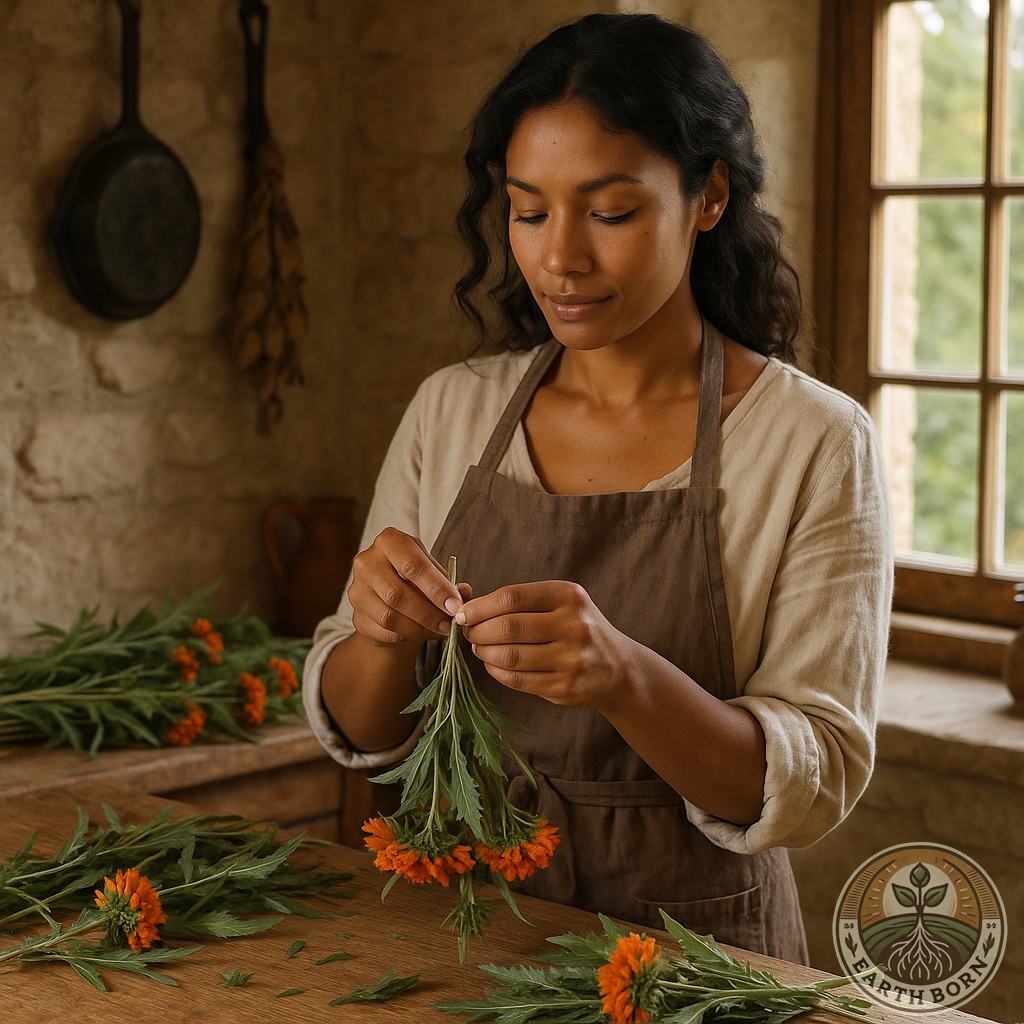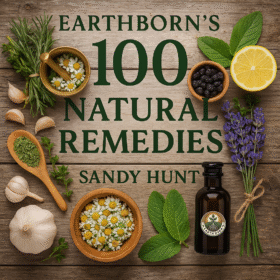
Wild Dagga (Leonotis leonurus), also called Lion’s Tail or Lion’s Ear, is a striking perennial shrub native to South Africa, particularly the Eastern and Western Cape, KwaZulu-Natal, and Free State. Wild dagga isn’t cannabis; it’s a South African indigenous shrub in the mint family, beloved by sunbirds and bees. It belongs to the mint family (Lamiaceae) and has been valued for centuries both for its ornamental beauty and its medicinal uses. Traditionally used by the Khoikhoi and San people, its vivid orange, tubular flowers resemble a lion’s tail, giving the plant its common name.
💊 Medicinal Benefits
Wild Dagga is traditionally used for:
- Anti-inflammatory relief – easing swelling, joint pain, and muscle aches.
- Calming and mild sedative effects – helping reduce anxiety and stress.
- Respiratory support – relieving coughs, colds, and mild bronchial conditions.
Active compounds such as Leonurine and Stachydrine contribute to these effects. It is often prepared as an herbal tea, tincture, or smoked in small amounts in traditional practice.
Check out our 3 Remedies You Can Make at Home post
📅 When to Plant in South Africa
Best planted in spring (September–November) for vigorous growth through the warmer months. In frost-free areas, it can also be planted in early autumn. Seeds germinate quickly in warm conditions.
Propagation
- Seed: Sow in spring (Aug–Oct). Barely cover; keep warm (18–22 °C) and evenly moist. Germinates in ~2–4 weeks. Prick out at 4–6 true leaves.
- Cuttings: 8–12 cm semi-hardwood tips in spring/summer. Strip lower leaves, dip in rooting hormone, place in airy mix (50/50 perlite & fine bark/coir). Root in 3–5 weeks.
- Division: Not typical.
Seasonal calendar (SA)
- Aug–Oct: Sow seed, plant out, hard prune older bushes.
- Oct–Apr: Peak growth and flowering; light shaping and deadheading.
- May–Jul: Reduce watering; in frost-prone areas mulch crowns.
🏡 Where to Plant
Choose an open, sunny location with plenty of space for the plant to spread. Wild Dagga grows best in the ground rather than in containers, as it can reach impressive heights and needs strong roots.
🌞 Soil, Water & Sunlight Requirements
✅ Soil – Well-draining sandy or loamy soil, enriched with compost.
✅ Sunlight – Full sun (6–8 hours of direct sunlight daily).
✅ Water – Moderate watering; allow the topsoil to dry slightly between waterings.
✅ Fertilize – Apply a balanced organic fertilizer every 4–6 weeks during the growing season.
✅ Spacing – Space plants 60–90 cm apart to allow airflow and reduce disease risk.
✅ Seeds germinate – 10–15 days in warm, moist soil.
✅ Transplanting – Transplant seedlings when 6–8 weeks old and strong enough to handle.
✅ Maturity height – 1.5–3 m tall, with a spread of up to 1.5 m.
🍓 Flowers & Fruit
Produces tall spikes of bright orange, tubular flowers arranged in tiers. Flowering occurs from late spring through autumn, attracting bees, butterflies, and sunbirds. The fruit is a small nutlet containing seeds.
🌼 Companion Plants
Pairs well with lavender, rosemary, sage, and African wormwood, which also thrive in sunny, dry conditions and attract beneficial pollinators.
🐛 Common Pests
Occasionally affected by:
- Aphids – can be controlled with neem oil spray.
- Spider mites – manage with regular misting and natural predators like ladybirds.
🧺 Harvesting
Harvest leaves and flowers during the flowering season for medicinal use. Cut in the morning after dew has dried for maximum potency. Take the upper ⅓ of non-woody shoots; avoid stripping a plant bare (leave at least 50% foliage).
🫙 Storage
Dry leaves and flowers in a warm, shaded, and well-ventilated area. Store in an airtight container away from direct sunlight.
Method: Bundle loosely or spread on screens in shade with airflow.
Time: 5–10 days until crisp.
Storage: Airtight jars, cool and dark; label with date. Potency is best within 9–12 months.
🧪 How to Use as Medicine
- Herbal tea: Steep 1–2 tsp dried leaves in hot water for 10 minutes.
- Tincture: Steep fresh or dried plant material in alcohol for 4–6 weeks; use a few drops diluted in water.
- Smoke (traditional use): Dried leaves and flowers smoked in small quantities for relaxation. Although smoking wild dagga has been recorded traditionally, inhaling any smoke can irritate the lungs. Teas and tinctures are gentler options.
Check out our remedies section
🎉 Fun Fact
The tubular flowers are a favourite of sunbirds, who help pollinate the plant while feeding on its nectar.
⚠️ Caution
- General: Usually well-tolerated in culinary/tea amounts; larger doses may cause drowsiness, light-headedness, or a drop in blood pressure in sensitive people.
- Avoid if: Pregnant or breastfeeding; you have severe cardiovascular disease, very low blood pressure, or a history of fainting.
- Interactions (caution):
- Blood pressure medicines (additive effects possible).
- Sedatives (may enhance drowsiness).
- Anticoagulants/antiplatelets: data is limited—use caution and monitor for easy bruising.
- Allergy: If you react to other mint-family plants, introduce slowly.
- Duration: Use for acute issues for a few days to a week; if symptoms persist or worsen, seek medical care.
🌿 Call to Action:
Bring a piece of South African heritage into your garden! Plant Wild Dagga this spring and enjoy its fiery blooms, pollinator-friendly nature, and centuries-old medicinal value.
#EarthBornGrower #WildDagga #LeonotisLeonurus #MedicinalPlants #SouthAfricanHerbs


 **Meet Sprout!** Sprout is your friendly gardening companion at Earthborn, always ready with helpful advice on plant care, medicinal herbs, and natural gardening solutions. From seedling to harvest, Sprout provides expert guidance to nurture your garden and your well-being—making gardening easy, fun, and naturally rewarding.
**Meet Sprout!** Sprout is your friendly gardening companion at Earthborn, always ready with helpful advice on plant care, medicinal herbs, and natural gardening solutions. From seedling to harvest, Sprout provides expert guidance to nurture your garden and your well-being—making gardening easy, fun, and naturally rewarding.

[…] Wild Dagga, also known as Lion’s Tail or Leonotis leonurus, is a proudly South African plant celebrated in traditional medicine for its anti-inflammatory, mild pain-relieving, and mood-enhancing properties.Below are three popular preparations you can try — including a tincture — with suggested dosages, safety tips, and important disclaimers. […]